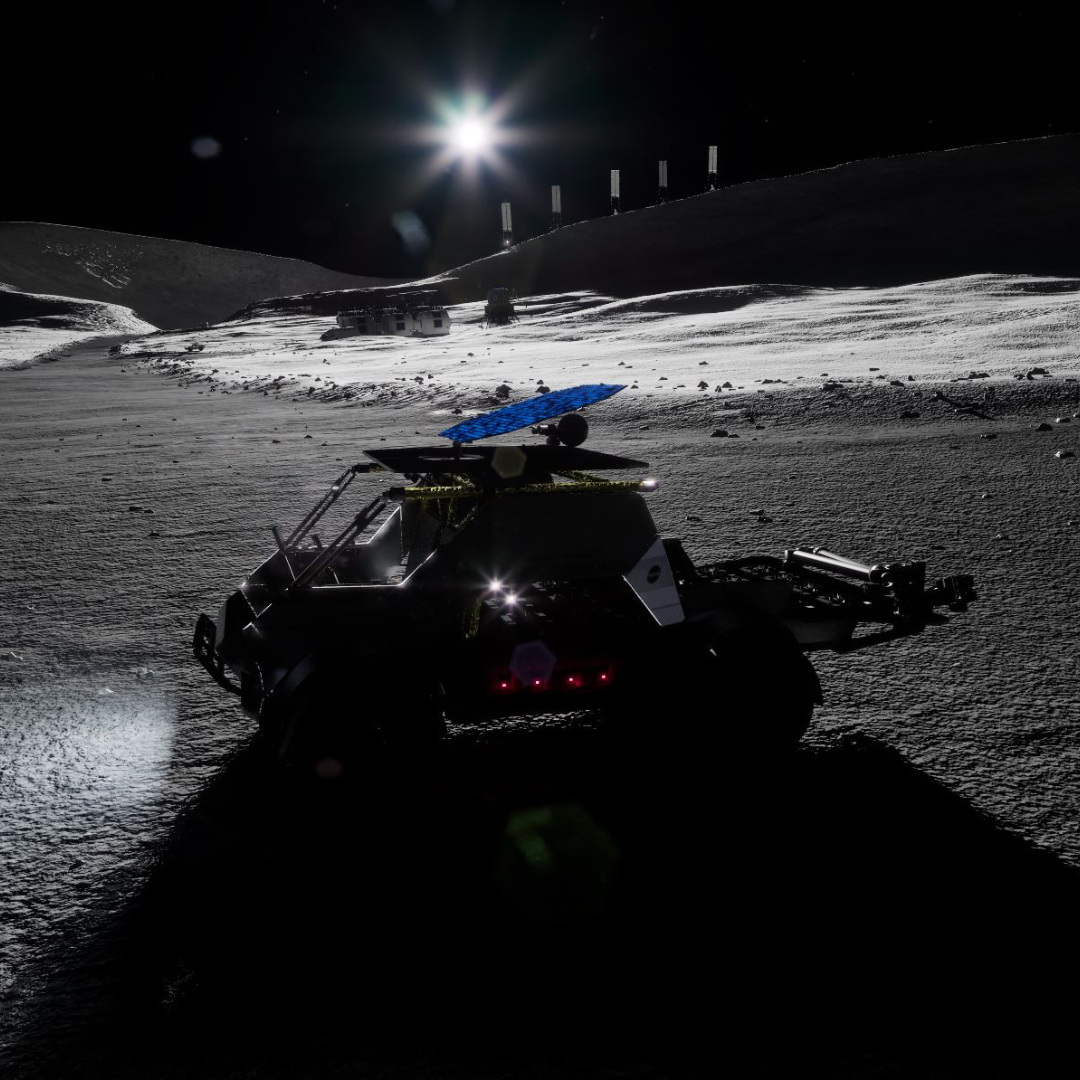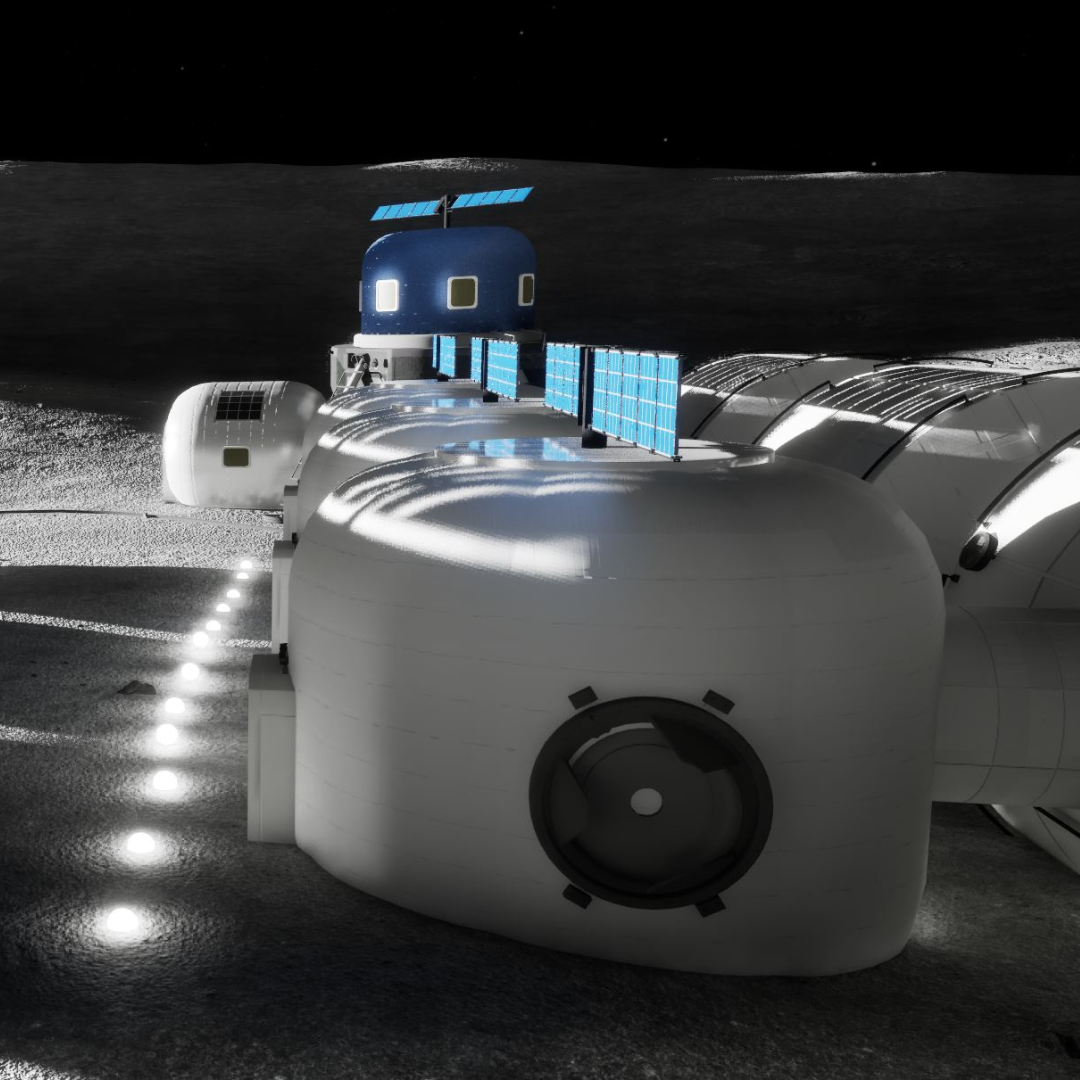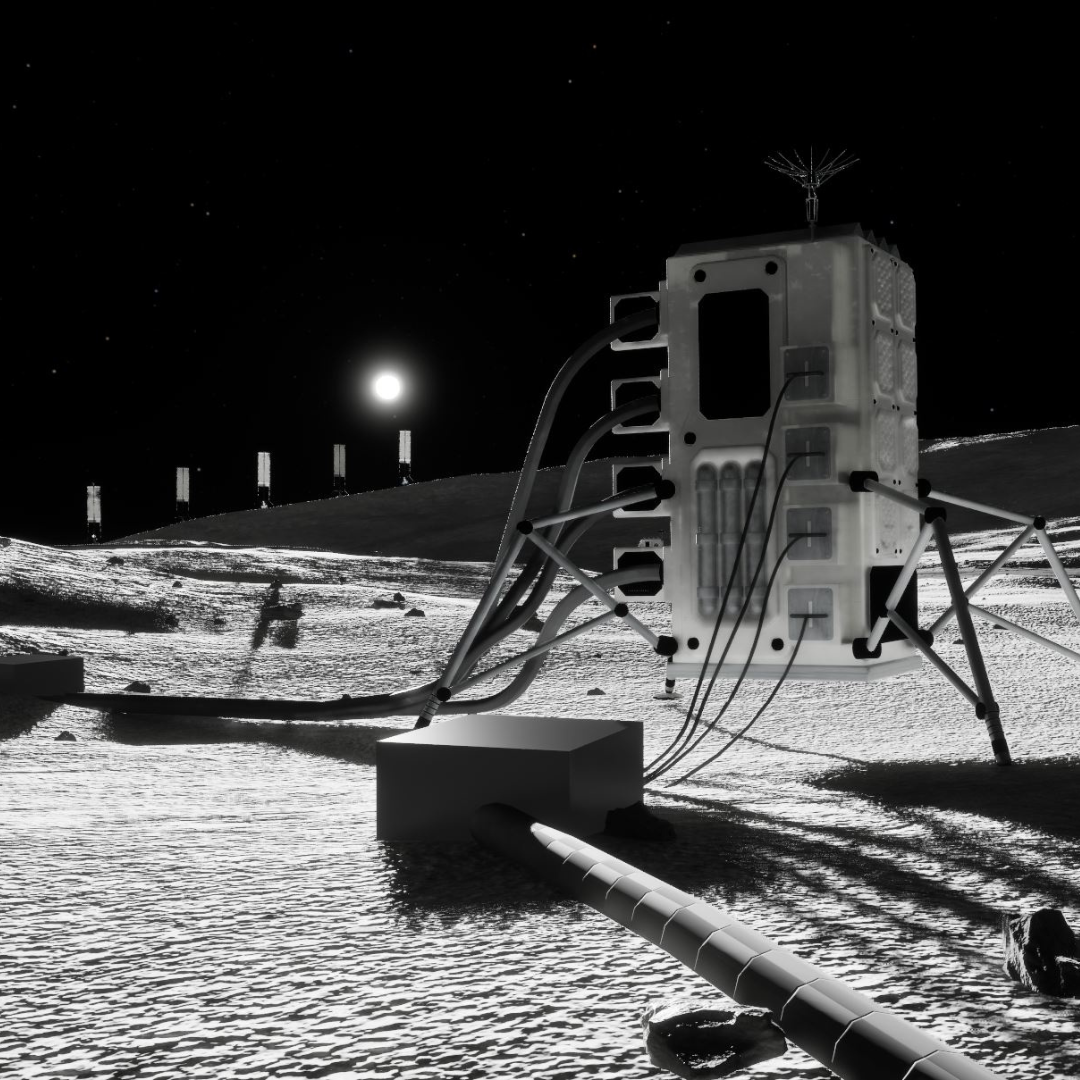Lockheed Martin recently published a novella whitepaper explaining the company’s vison for its water-based lunar architecture—a vision that demonstrates our commitment to sustainable space exploration on the Moon and, eventually, on to Mars.
At the heart of this project was Adam, a systems engineer in our Space business area. We connected with Adam to learn how he merged his passions for space and storytelling, technical expertise, and big-picture systems thinking to bring a fresh approach to an industry standard: the whitepaper.
Manifesting a Career in Space
Early on, Adam knew his career was destined for the stars.
“I fell in love with reading science fiction,” he said. He dreamed of achieving the future captured in those books. When he learned about space mining, it all clicked. That day, he devoted his career to the large-scale space resources utilization required for humanity to settle space en masse.
That passion eventually brought him to the Colorado School of Mines as a mechanical engineering undergrad, where he attended the Space Symposium conference. He interviewed with a recruiter and was offered an internship at Lockheed Martin. “Showing up and meeting real humans, not the application portal, is the best way for a company and student to make a real connection,” he said.
Adam’s internship was in process improvement, figuring out how to help the manufacturing floor build spacecraft cheaper and quicker for our customers. “Understanding the nuts and bolts of how space vehicles get built—the perspective of the person on the shop floor—is a great start for any engineer who will someday be designing those vehicles," he said.
Shortly after joining Lockheed Martin, Adam took full advantage of the company’s tuition reimbursement benefit, going back to Mines for a master of science in Space Resources. “The opportunity to go back to school, at no net cost, while working full time, and where each course was immediately applicable to the work I was doing at Lockheed Martin, provided a lot of value to my career,” he said.
Bringing the Vision to Life
As a newly minted systems engineer, Adam led the AP group’s research and development team for in-situ resource utilization (ISRU). Life in AP was fast-paced with opportunities to work on many projects, including systems engineering, architecture, technical writing, business development, commercial sales, and program management. In 2023, leadership approached him with another project. The corporation had an internal strategy for how the Moon could be developed over the next 20 years, which Adam had supported as an engineer. But it was time to take the vision public, and it needed an author.
The vision, backed by years of architectural research and studies, describes how the best lunar architecture is one that is water-based, nuclear-enabled, and commercially invested. It was originally supposed to be expressed as a 2-page executive overview, but as it grew, the team decided it would be more impactful in a narrative format.
“Industry typically publishes highly technical conference papers, or launches marketing campaigns centered around a specific product,” Adam said. “Our novella whitepaper is unique…we don’t think a document like this has ever been done before by a large space corporation.”
The 30-page novella whitepaper—embedded with futuristic graphic renders of life on the Moon—speaks directly to the reader in second person, putting them in the driver’s seat of the story. By providing a technically credible glimpse into humanity’s future, readers can imagine how they might fit into a lunar community set in the 2040s.
“It was our amazing team of architects, engineers, storytellers, and artistic geniuses that really shaped the vision and brought the words to life,” Adam said. “Rolling up your sleeves with a diverse and creative team of experts is one of the best parts of working at Lockheed Martin.”



Building the Vision: First Steps
Adam’s journey has since come full circle, where he now gets to work on a key enabler and the first stepping stone of achieving the refueling roadmap at the heart of this vision.
Today, he serves as the propellant transfer integrator for the Cislunar Transporter, the world’s first cryo-hydrogen propellant refueling spacecraft that Lockheed Martin is building as part of the Blue Origin-led National Team for the Sustaining Lunar Development (SLD) human lunar lander program. Or, in his layman’s terms: “the gas station attendant for the Artemis V lander mission.” He is responsible for one of the vehicle's primary functions: on-orbit cryogenic propellant refueling.
When asked to look back on the trajectory of his career, Adam offered this advice to others:




